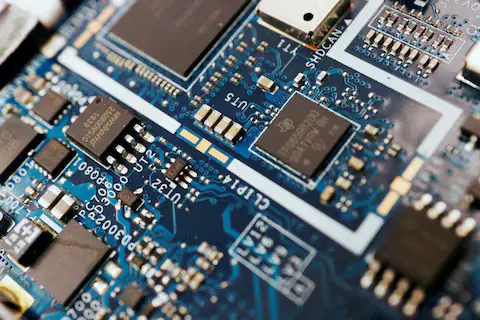U.S. to Reveal Findings of Semiconductor Import Probe Within Two Weeks
By Roy J. Miles

The Trump administration is poised to deliver the outcome of a nationwide security probe into semiconductor imports within approximately two weeks, Commerce Secretary Howard Lutnick said on July 27, 2025. The investigation, authorized under Section 232 of the Trade Expansion Act of 1962, evaluates whether heavy reliance on imported chips—particularly those sourced from Taiwan—constitutes a threat to national security. Lutnick shared the timeline immediately after a summit between President Donald Trump and European Commission President Ursula von der Leyen, during which broader trade negotiations were advanced amid chip tariff concerns.Lutnick emphasized that one of the primary motivators for the European Union to enter a wide-ranging trade framework with the United States was to preempt potential semiconductor tariffs by resolving trade disputes collectively. He stated that EU leaders sought to include semiconductor-related issues in a broader agreement, allowing both sides to manage risk and uncertainty at once :.President Trump echoed the sentiment, noting that many firms—including those based in Taiwan—have expressed intent to expand chip manufacturing operations in the U.S. to avoid anticipated tariffs. He praised von der Leyen for “avoiding the pending chips tariffs in a much better way” through the trade negotiations :.Conducted under Section 232, the probe examines whether foreign dependency on semiconductor imports could impair U.S. defense and economic independence. If deemed a vulnerability, Trump could impose new duties on chip imports and possibly broader electronics categories. U.S. semiconductor reliance has been a growing concern amid escalating geopolitical tensions and supply chain restructuring efforts :.This is not the only Section 232 inquiry underway: the administration has concurrently launched investigations into pharmaceuticals, copper, lumber, and has previously enacted tariffs on steel and aluminum. Many of those earlier actions were rolled out under Trump’s first term and have resumed with renewed vigor in his second term, targeting various critical sectors :.Since 2022, U.S. leaders have sought to reduce semiconductor dependence through subsidies and production incentives embedded in the CHIPS and Science Act. Yet analysts warn that rebuilding manufacturing capacity domestically faces substantial hurdles—notably high capital costs, long development timelines, and workforce shortages. As of now, even with subsidies, only a small fraction of advanced chip manufacturing occurs within U.S. borders :.Investors and industry watchers have raised alarms over tariff risks. Bloomberg and Wall Street Journal reports highlight that tariffs on chips—or even electronics containing foreign chips—could shimmer across technology, consumer, and auto sectors. Company earnings have already shown signs of strain from trade uncertainty: Texas Instruments, ASM International, and other semiconductor-related firms cited disrupted demand and hesitant capital spending in recent reports :.Markets reacted cautiously to news of the trade probe and tariff threats, with equity futures showing mixed movement alongside broader investor concerns about inflation and global growth. The U.S.–EU trade framework offering a 15% tariff on European goods—and 25% on autos—is seen as both a diplomatic win and a signal that chip tariffs may follow traceable precedent :.Industry leaders warn that tariffs on semiconductor imports could significantly raise costs across manufactured electronics. Bernstein Research has estimated that chip content could account for up to 60% of the value in smartphones and laptops. Further, potential duties on chip manufacturing equipment—which is often sourced from firms like ASML in the EU—pose added uncertainty, especially if country-specific tariffs emerge :.Despite the regulatory scrutiny, both sides of the U.S.–EU trade framework expressed optimism. The deal, which was expedited partly due to chip tariff fears, is viewed as a template for broader coordination amid trade fragmentation. Still, analysts caution that execution, compliance, and follow-through will determine whether the framework truly prevents further escalation :.Looking ahead, Chinese and Taiwanese semiconductor firms—dominant in global chip supply—face pressure to either commit to U.S.-based production or risk facing trade barriers. At least one executive reportedly confirmed Taiwanese chipmakers aim to expand operations stateside. The outcome of the probe could shape decisions about where future fabs are built and how capital flows across supply chains :.The semiconductor investigation is scheduled to conclude by mid‑August. Depending on the findings, the White House may implement tariff rates on raw chip imports or broader electronic goods. The administration’s prior pattern suggests sector-specific escalation—such as 50% tariffs on copper and 25% on autos—making chip tariffs plausible and potentially severe :.In summary, the U.S. government is on the verge of publishing a decisive report that may reshape the semiconductor industry; creating ripple effects for trade, manufacturing policy, investor sentiment, and global supply chains. As both Washington and Brussels maneuver to manage fallout, businesses in electronics, automotive, and strategic sectors are closely monitoring whether tariff impacts or industrial investment incentives will define the next phase. The probe outcome may mark a critical inflection point in U.S. economic diplomacy and industrial policy toward high-tech supply chain resilience.